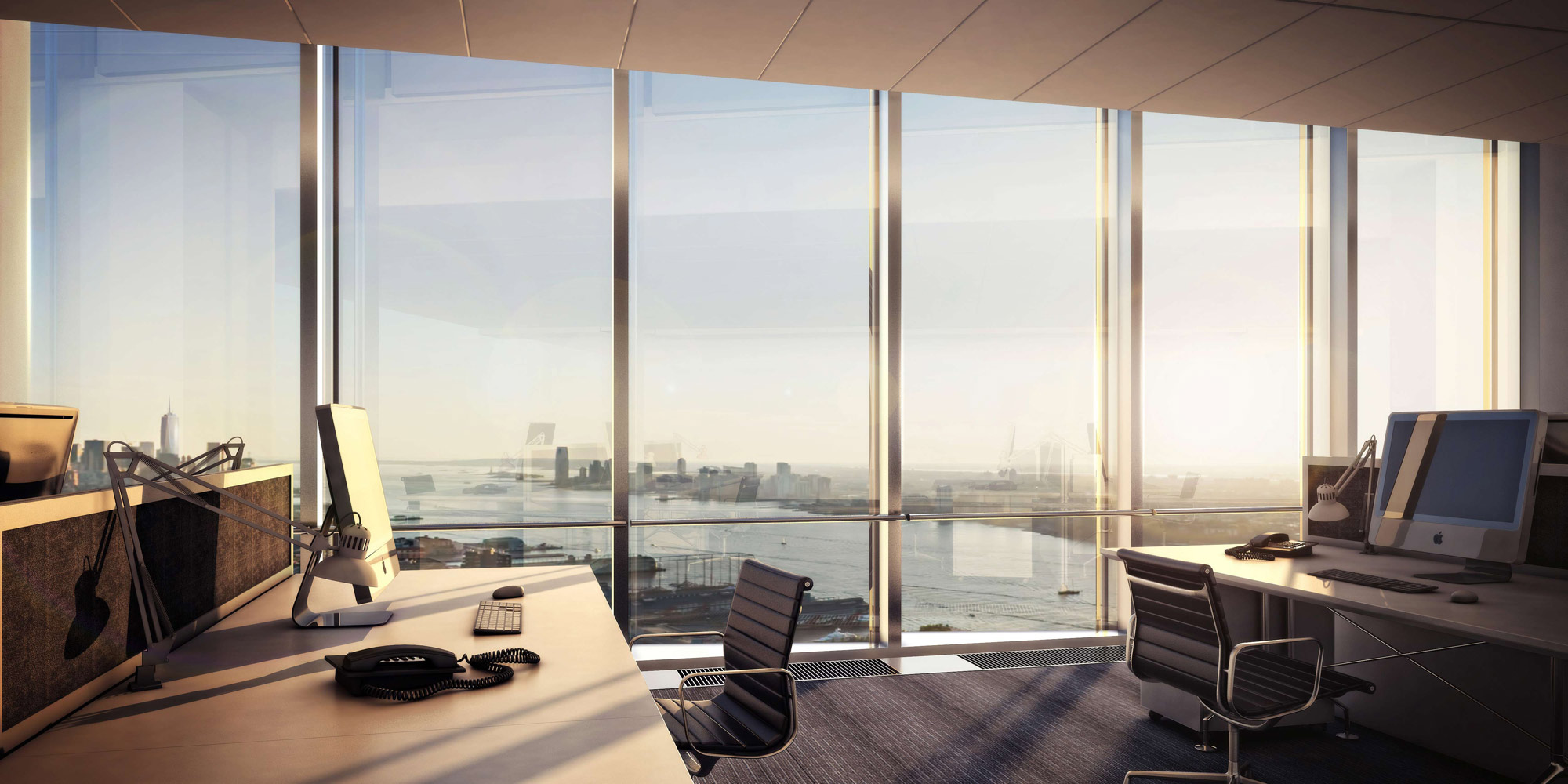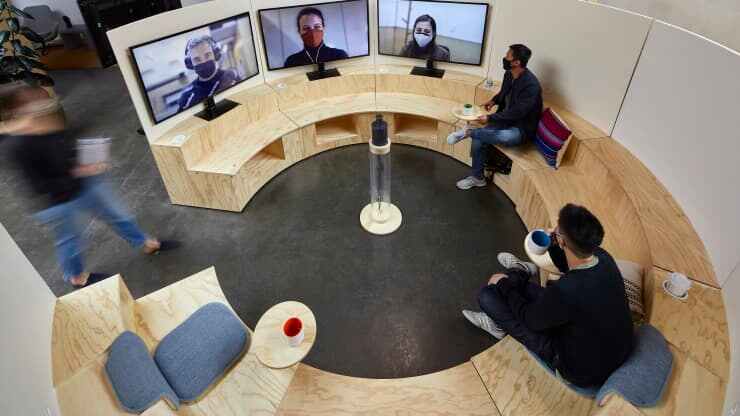In March 2020, tens of millions of Americans shifted to working from home to avoid exposure to Covid-19.
In April 2020, 70% of Americans “always or sometimes” worked remotely, according to Gallup. Today, that share is closer to 56%, even though 61% say they prefer working from home.

Now, companies all around the world are planning to bring more workers back to the office. One survey of 350 business leaders by staffing firm LaSalle Network found that 70% plan to have employees back in the office in some capacity by the fall of this year.
Over time, many workers adjusted to working from home during a global pandemic. And while vaccinations are proving to be effective, many will now need to learn how to work from the office during a global pandemic.
CNBC Make It spoke with experts about what the return to work will look like.
Hybrid work
High-profile companies like Microsoft, Apple, and Google say they will be using a hybrid work model, where workers spend time working both from the office and from home, going forward. And business leaders don’t seem to think that shift is temporary. In the LaSalle survey, 77% of respondents said they believe their workforce will use a hybrid model through next year.

Brian Welle, the VP of people analytics at Google was one of the leaders helping make this call. He says that while internal polling suggests that productivity did dip at the very beginning of the pandemic, Googlers’ productivity rebounded to pre-pandemic levels fairly quickly. Now, Google’s employees appear to be split about where they do their best work.
“When it came to work productivity, ‘Where can I do my best thinking? Where can I do my best coding? Where can I do my best work?’ You’ve got some people who say from home, some people who say from the office, and almost an equal percentage who say it doesn’t matter,” says Welle. “Wouldn’t it be easy if it were nice and simple down the road that you categorize people into one or the other? And it’s not that way.”
In part because of this split, Google chose to embrace a hybrid option.
“Where we ended up as a company is offering as much flexibility as we could to enable Google employees to optimize for themselves, while also giving teams what they needed,” he says. “What it looks like is a default option, that we think most employees are going to take advantage of, which is coming into the office three days a week, and working from another location two days a week.”
Hybrid work, he says, “Lets you do all the things we came to love about working from home, while also getting that moment of connection and the ability to do innovative work in person in the office.”
Traffic jams
Amy Webb, founder of the Future Today Institute says that because so many companies are embracing a hybrid work structure, the in-office work week will largely shift to Tuesday through Thursday.
Webb is a quantitative futurist, which means she uses data to build models to find emerging trends and then uses that info to find plausible outcomes. She says that current data suggests that so many organizations will embrace this shortened work week that traffic patterns will change.
“Tuesday through Thursday is going to be hell for anybody who’s trying to commute with a car,” she says. “And what does that mean? Well, it’s a signal for local cities and highway administrations who could right now be adjusting what those traffic patterns look like, but we know they’re not doing that. So there’s going to be gridlock in ways that we just haven’t seen before and haven’t anticipated.”
More traffic will lead to longer commute times for workers and will take away personal time that remote workers have become accustomed to, which could lead to a more frustrated and tired workforce.
These changes in when people travel will also impact nearby businesses, she adds.
“It’s possible that people will be eating and drinking at different times than they used to,” says Webb. “That has a pretty big effect on local restaurants, and gyms, and health centers, and things like that.”
Awkwardness and conflict
Webb says the next 24 months will be a sort of “disorienting” phase. A kind of puberty as we awkwardly try to return to the office, mask acne and all.
One reason: Many of us are going to have to re-learn how to socialize and get along with one another.
Additionally, Webb says the fraught political and cultural climate of the past year will not just disappear when we return to the office. And while we are all still working on strengthening our interpersonal skills, this could, unfortunately, lead to office conflicts.
She continues, “We have a lot of underlying tensions that had nothing to do with the pandemic, that we’re all going to have to contend with once we’re back in each other’s presence.”
Employee control
Going forward, Welle says workers will place a premium on control (such as where and when they want to work) and that workplaces will need to listen.
“For many employees, there was this sort of anxiety about what comes next,” he says. “If you feel as though Google can unravel all of that by requiring you to come into the office five days a week, that’s a source of anxiety. Control, I think is actually a sense of relief for many of those employees.”
This appears to be true for the broader working community as well.
A recent survey done by Morning Consult on behalf of Prudential polled 2,000 adults working full-time. It found that 87% of American workers who have been working remotely during the pandemic would prefer to continue working remotely at least one day a week, post-pandemic. Among all workers, 68% say a hybrid workplace model is best. Importantly, 42% of current remote workers say if their employer doesn’t continue to offer remote work options long-term, they’ll look for a job at a company that does.
Today, workers are quitting their jobs at the highest rates in 20 years — the highest rate ever reported by the BLS. Some 4 million people quit their jobs in April 2021 alone.
“My personal belief is that this is a sea change,” says Welle. “There is no going back to the status quo. If one company tries you’re going to be met with 10 others that have maintained the experiment. So I think we’ve turned a corner — an exciting one.”
And Webb points out that medical experts agree that the coronavirus is not the last pandemic and that workers and workplaces will therefore need to continue to adjust.
“I’m not comfortable predicting what the future of work is totally going to look like,” she says. “I am absolutely comfortable predicting the prevalence of more and more viruses in our lives.”
Source: https://www.cnbc.com/2021/06/26/heres-what-the-return-to-the-office-will-look-like-this-fall.html
You would like to rent office space in Ho Chi Minh City, Vietnam?
CJ Building is located at the heart of Ho Chi Minh City where all necessary facilities are at your hands. We offer all solutions for your various requirements of offices. Learn more about our office plans and find the ideal workspace for you and your business to thrive in.
 What is a business center?
What is a business center?  Four ways that organizations can help tomorrow’s leaders
Four ways that organizations can help tomorrow’s leaders  VIETNAM REAL ESTATE INVESMENT MARKET OVERVIEW AND OUTLOOK Q2.2023
VIETNAM REAL ESTATE INVESMENT MARKET OVERVIEW AND OUTLOOK Q2.2023  “Hub & Spoke” - A promising trend for the office rental market in Ho Chi Minh City and the potential in Tan Phu
“Hub & Spoke” - A promising trend for the office rental market in Ho Chi Minh City and the potential in Tan Phu  “Shopping” for a virtual office during the Covid-19 pandemic is surprisingly beneficial.
“Shopping” for a virtual office during the Covid-19 pandemic is surprisingly beneficial. 2 Bis - 4 - 6, CJ BUILDING
No. 6 Le Thanh Ton street, Sai Gon Ward, HCMC
Tel: +84 28 6255 6800 | Fax: +84 28 6255 6801
Email: leasing@cjbuilding.com.vn



